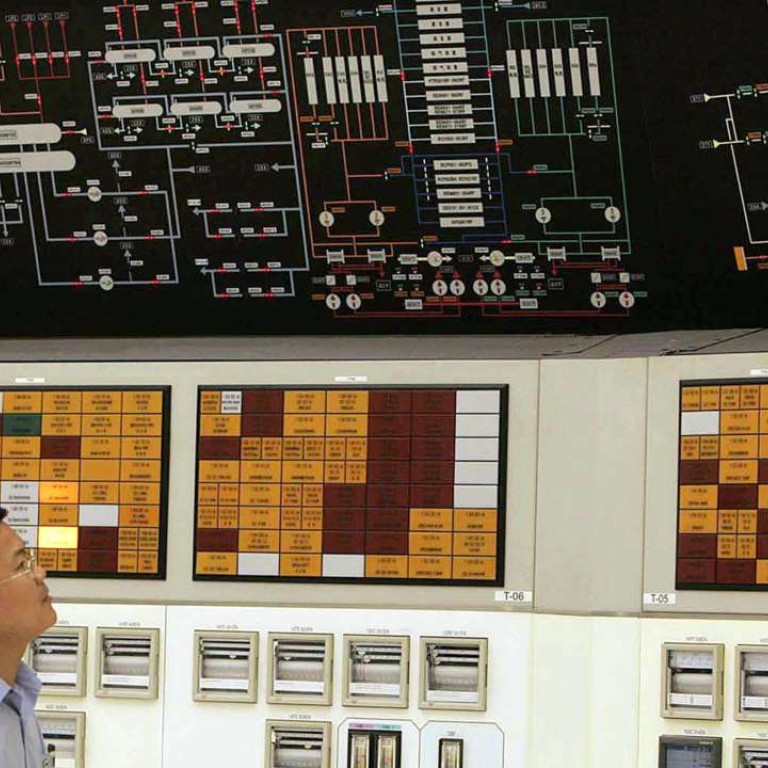
China sets sights on new global export: nuclear energy
But analysts say multibillion-dollar plan ignores reality of weak global demand
On a seaside field south of Shanghai, workers are constructing a nuclear reactor that is the flagship for Beijing’s ambition to compete with the United States, France and Russia as an exporter of atomic power technology.
The Hualong One, developed by two state-owned companies, is one multibillion-dollar facet of the Communist Party’s aspirations to transform China into a creator of profitable technology from mobile phones to genetics.
Still, experts say Beijing underestimates how tough it will be for its novice nuclear exporters to sell abroad. They face political hurdles, safety concerns and uncertain global demand following Japan’s Fukushima disaster.
China’s government-run nuclear industry is based on foreign technology, but has spent two decades developing its own with help from Westinghouse Electric, France’s Areva and EDF and other partners. A separate export initiative is based on an alliance between Westinghouse and a state-owned reactor developer.
The industry is growing fast, with 32 reactors in operation, 22 being built and more planned, according to the World Nuclear Association, an industry group. China accounted for eight of 10 reactors that started operation last year and six of eight construction starts.
Abroad, builders broke ground in Pakistan last year for a power plant using a Hualong One, supported by a US$6.5 billion Chinese loan. Also last year, Argentina signed a contract to use the reactor in a US$15 billion plant financed by Chinese banks.
Sales come with financing from state banks, a model that helped Chinese companies break into the market for building highways and other public works in Africa and the Middle East. State-owned companies also are lining up to invest in nuclear power plants in Britain and Romania.
“This is generating a significant build-up of skills and industrial experience,” said Mycle Schneider, a nuclear energy consultant in Paris.

Still, Beijing was “seriously underestimating” how hard global sales would be, Schneider said. He listed obstacles that include strict quality controls, regulations that differ from country to country and competition from the falling cost of wind and solar power.
“There is simply no market out there,” he said.
At home, Beijing faces public unease about nuclear power following an avalanche of industrial accidents and product-safety scandals.
This month, thousands of residents of Lianyungang, north of Shanghai, protested after rumours spread that a facility to process nuclear waste might be built there. Authorities said the city, home to one of China’s biggest nuclear power plants, was only one of several being considered. After more protests, they announced the search for a site was suspended.
Overseas, China’s nuclear companies face questions over their status as arms of the state.
British Prime Minister Theresa May ordered a security review of plans to allow China General Nuclear Power (CGNP) to become a minority investor in the planned Hinkley Point C power station being built by EDF.
In response, China’s ambassador to London wrote in The Financial Times that a delay might harm official ties.
The Hualong One under construction in Fuqing, near the southeastern city of Fuzhou, is a hybrid created by CGNP and its main rival, China National Nuclear Corporation (CNNC), after they were ordered in 2011 to merge two competing reactors into a single export product.
Based on French systems of the 1970s and 1980s, it belongs to the industry’s third generation of reactors, with more advanced safety features and a working life of 60 years, instead of the previous generation’s 40.
CNNC is installing two Hualong One reactors at the Fuqing Nuclear Power Plant, due to go online in 2019 and 2020. The power station also has two Areva units and is building two more.
CGNP is building its own version in Fangchenggang on the southern coast near Vietnam, and says it wants to seek British regulatory approval of the Hualong One design for possible use in a power plant in Bradwell on Britain’s east coast.
China’s nuclear industry has yet to report a major accident but reflexive official secrecy makes it hard for outsiders to assess its safety.
Changes in Chinese-designed models based on foreign technology, such as making reactors bigger while using cooling techniques for smaller units “raise questions about safety and the good judgment of Chinese reactor engineers”, said Edward Lyman, a nuclear power specialist for the Union of Concerned Scientists in Washington.

“It is crucial for countries importing Chinese nuclear technology to rigorously conduct their own oversight over the products they are buying,” Lyman said.
China’s first commercial nuclear plant went online in 1991 in Qinshan, south of Shanghai in Zhejiang province. Over the next decade, Beijing tested competing technologies by buying reactors from US, Russian, French and other suppliers.
Chinese companies couldn’t export models they developed because foreign companies owned the underlying technology.
So last year, Beijing declared nuclear power one of 16 “national science and technology projects”, with generous financial support to develop home-grown know-how.
The ruling party’s latest five-year development plan calls for China to have 58 gigawatts of nuclear generating capacity by 2020 and another 30GW under construction. By 2030, it wants 120GW to 150GW of nuclear capacity, supplying 8 to 10 per cent of the country’s power.
China’s status as an important market for global suppliers gives Beijing leverage in acquiring technology. Westinghouse, which was acquired by Japan’s Toshiba in 2006, Areva and France’s EDF have had partnerships with Chinese researchers since the early 1990s.
“I see them as customers, competitors and partners,” said Jeff Benjamin, Westinghouse’s senior vice-president for new plants and major projects.
Other global suppliers include GE Hitachi Nuclear Energy, South Korea’s KEPCO, Canada’s Candu Energy and Russia’s Atomstroyexport.

